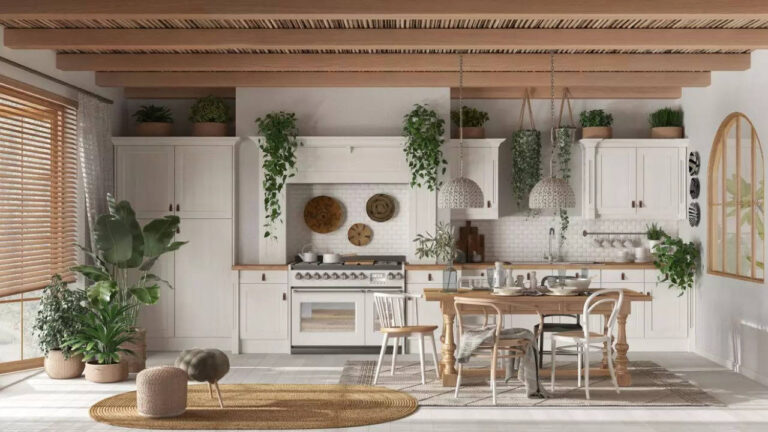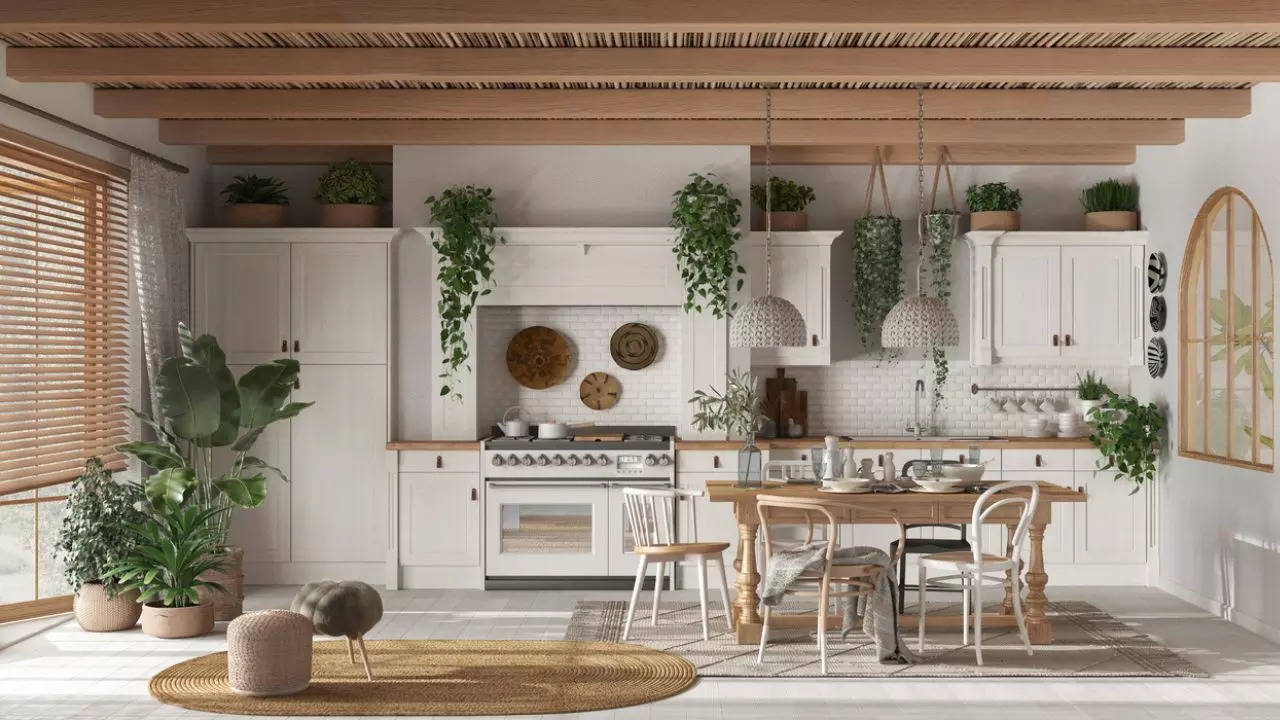
These simple tips will help you create a gorgeous home that incorporates the beauty of nature. (Photo: iStock)
If there's one thing I love to add to my home decor, it's finishing off a room with flowers. plantI don't want artificial or fake plants, I want a piece of nature in my home. Plus, plants have a lot of benefits, such as: Journal of Physiological Anthropology, “Active exchange Indoor plants “Plants can reduce physiological and psychological stress compared to mental tasks. This is achieved by suppressing sympathetic nervous system activity and diastolic blood pressure, promoting natural feelings of comfort and calm.” Here are some ways to incorporate plants into your home and decorate it.
The most versatile home decor accessory
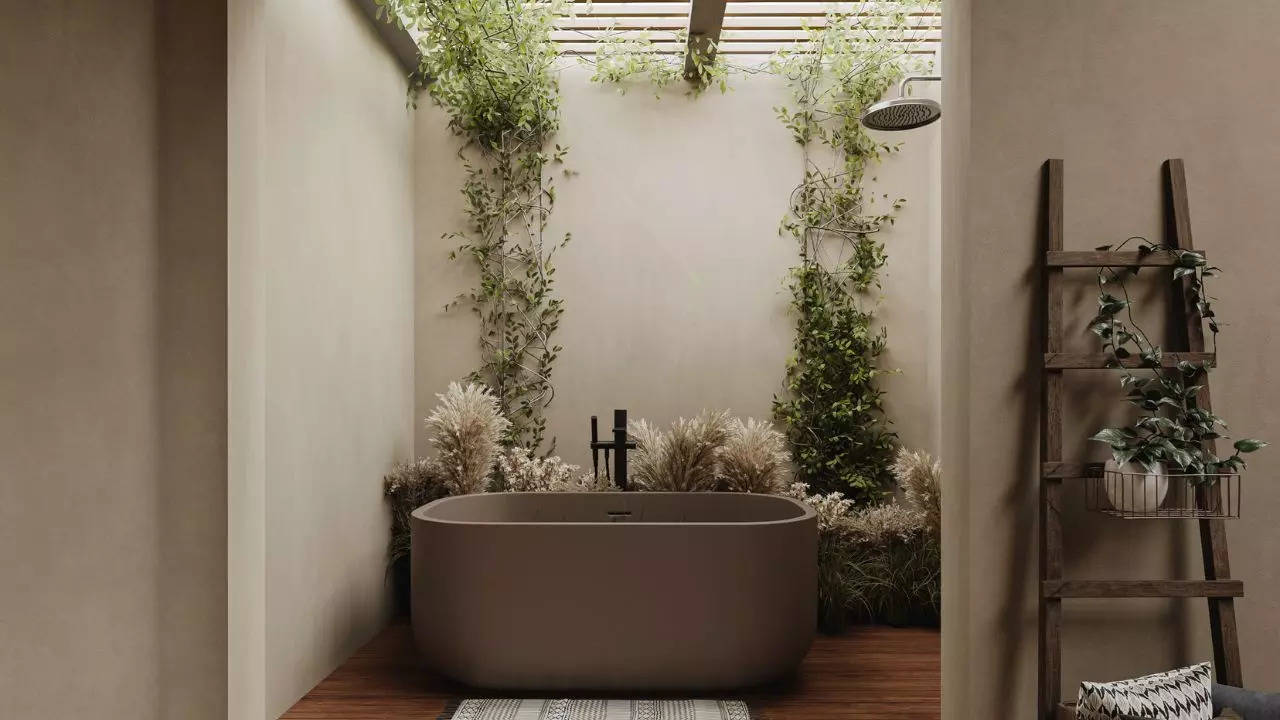
Devanshi DoshiCo-Founder, Studio Desiemphasizes that there's no wrong place to put plants. She says, “Verandas, balconies and window sills are obvious choices as they get plenty of natural light. But adding plants to spaces like the kitchen (herb garden) and bathrooms can enhance the curb appeal of your home. To incorporate plants, consider hanging plants, smaller plants on a shelf or desk, or a standout plant on a center table.”
Preetika Singh,Founder, Moooosays, “What's the perfect space? Entryways, living rooms, foyers, hallways – anywhere plants deserve it – are great places to add warmth while adding an effortless touch of style. Place them in a well-lit area, like near a window or a sunny corner. Use hanging pots, shelves, small planters or tall planters with quirky or beautiful finishes to add greenery and style.”
Riddhi AgarwalCo-Founder, Hip Couchsuggests placing large plants like bamboo in the southeast corner of the house. “Placing the plant in this direction ensures that it receives ample sunlight, bringing much-needed stability and prosperity into the home. Smaller plants like tulsi (up to 3 feet) are best placed in the east or northeast direction, which fills the abode with positive energy.”
The best plant sizes and types for indoor decoration
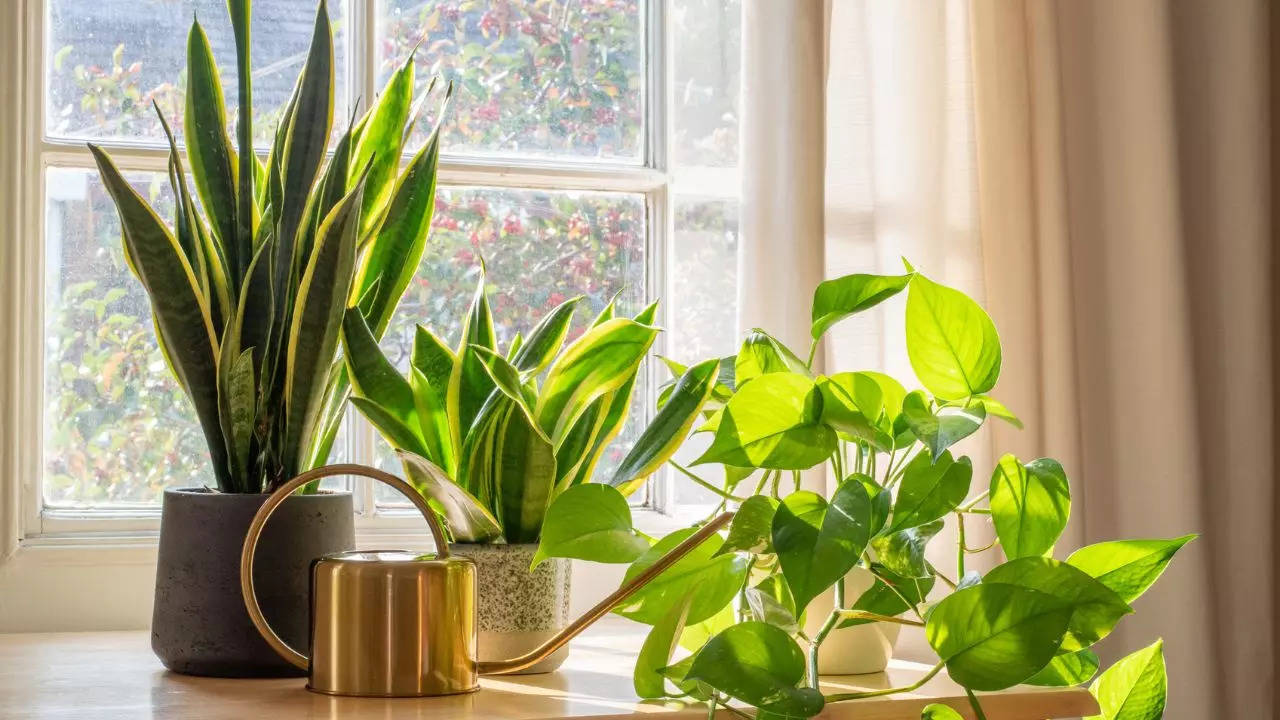
Think sansevieria, pothos and succulents as easy-care superstars. Pritika Singh says, “When it comes to size, I'd recommend planting a mix and match – go for dramatic large plants to add depth to empty corners and layer the surface with smaller plants to add interest. Don't be afraid to use variety – mix and match to create your own mini greenhouse!”
Ridhi Agarwal recommends plants like pothos, jasmine, sansevieria, peace lily, ferns, English ivy, tulsi, fiddle leaf fig and palms in your home, especially those that are around three feet tall.
The size and type of plant depends on the layout, weather and humidity, says Devanshi. “Large plants like Monstera, fiddle leaf fig, palm and banana trees can make a statement in your living space and become a focal point of the room. Smaller plants like Sansevieria, spider web plant, ZZ plant, succulents and potted creepers can adorn bookcases, study desks and consoles. Grouping plants of different colours and heights adds texture and depth to a space. Bonsai can add a stylish accent to a centre table or balcony bench.”
Tips for a Tiny House
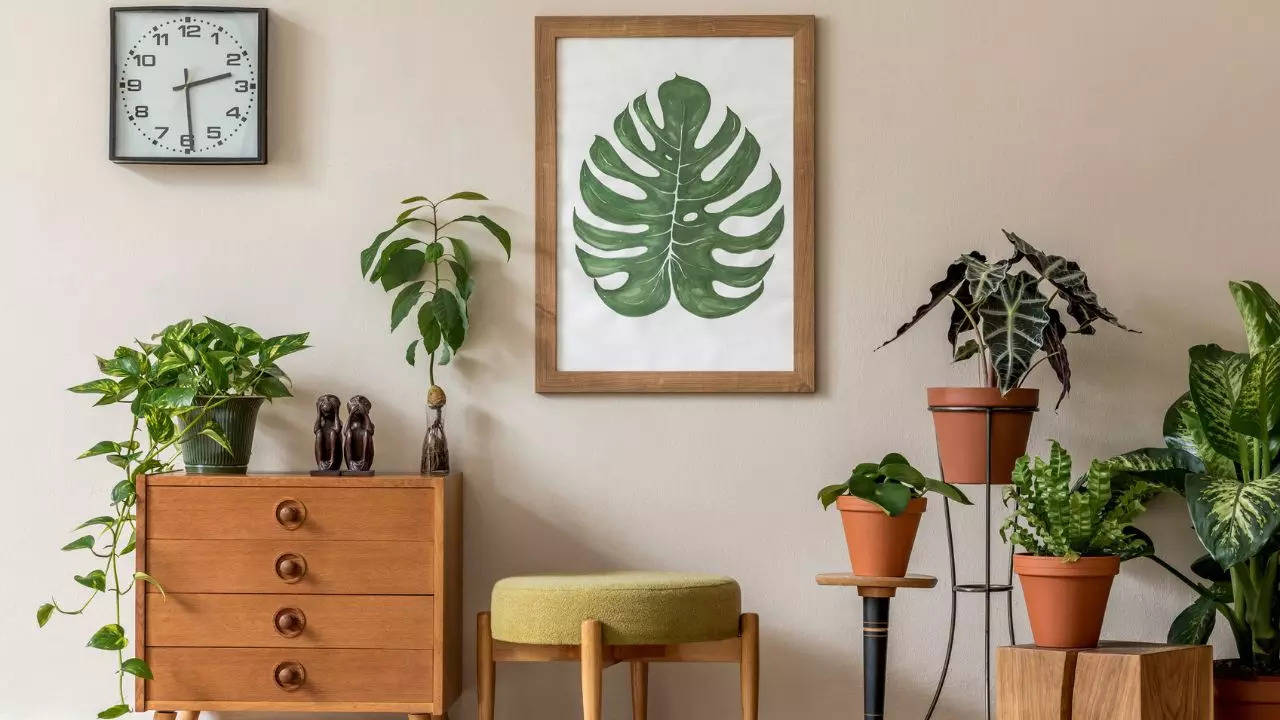
“I love filling spaces with hanging plants, using vertical or horizontal wall planters. Fill windowsills and shelves with mini planters, especially those with long strings. Keeping a mini succulent on your desk will instantly create a sense of calm!” says Pritika.
Devanshi recommends incorporating plants within furniture to save floor space. “Wall or ceiling mounted planters also work well. While large plants can overwhelm small spaces, small and medium sized plants can be placed on bookcases, consoles or shelves.”
Living walls or vertical gardens
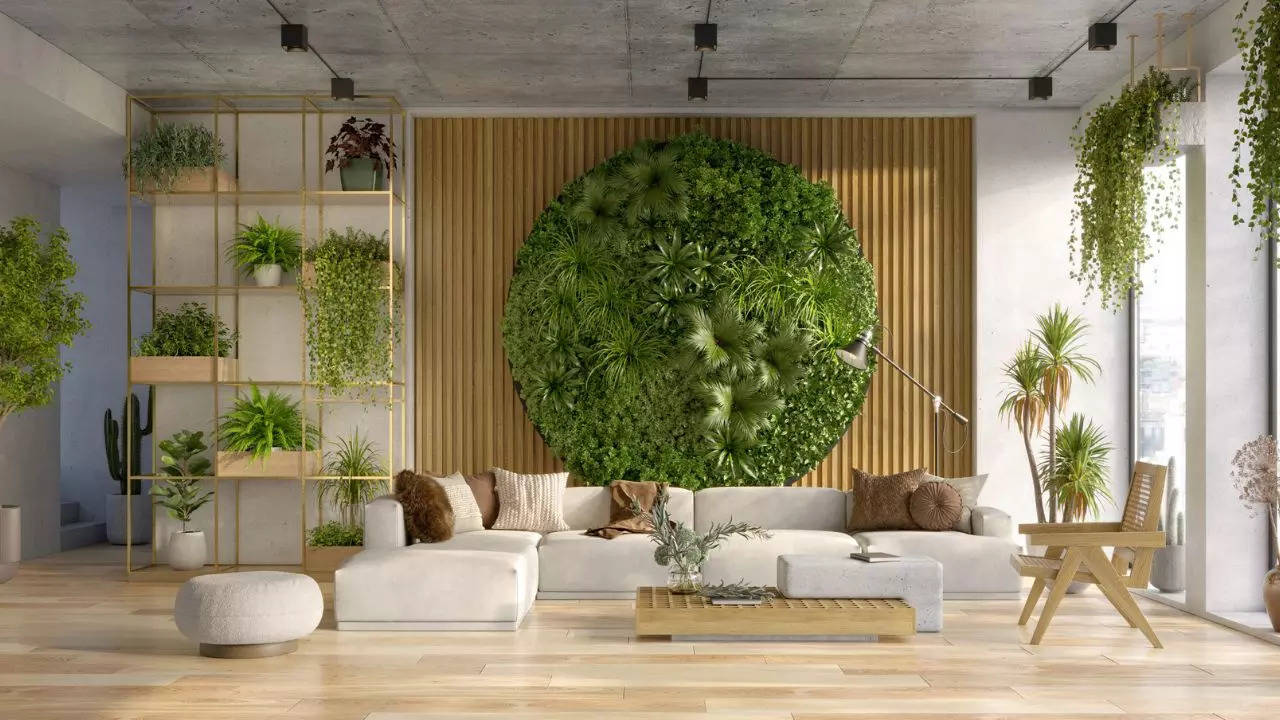
Living walls are one of the coolest ways to incorporate plants into your home décor. “The concept of a living wall is to grow plants in containers or other materials on the wall façade when you don't have much space to grow plants. These living walls are often used in areas where the air quality is very poor. They can be used both indoors and outdoors. Nowadays, many nurseries offer vertical gardens and living wall options, catering to different requirements,” says Ridhi.
“Living walls are the perfect green oasis for plant lovers with limited floor space. They are perfect for city dwellers and gardening enthusiasts alike. And where's the best place to get some? Check out your local nursery or online garden centre for availability and variety of different plants and create your own with love,” says Pritika.
Plants that attract abundance
“Incorporate money trees to bring wealth, bamboo to bring happiness and peace lilies to bring serenity. Place them thoughtfully and let good vibes flow for a serene home,” says Prithika.
“Sedum is a symbol of good fortune. Lucky bamboo, money plant, pachira – money tree in Sanskrit, Swiss cheese plant which means 'good fortune plant' in Sanskrit, peace lily, potted orchids, rubber trees and palms are some of the well-known lucky indoor plants,” says Ridhi.
“The money tree is believed to attract wealth and prosperity, while bamboo brings peace and happiness. The tulsi plant is also revered and is an essential part of every Indian household,” Devanshi added.


